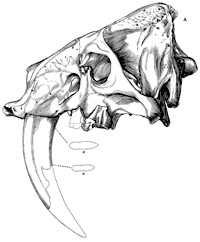Museum, University of Nebraska State

Bulletin of the University of Nebraska State Museum (1924–2023)
Date of this Version
2006
Document Type
Article
Citation
Bulletin of the University of Nebraska State Museum Volume 20 Issue Date: 1 June 2006
Abstract
The main objective of this monograph was a synthesis of the available knowledge on the diversity, systematics, host associations, and biogeography of the Diphyllidea. A thorough review of the literature resulted in the transfer of Diagonobothrium into Diphyllidea as a genus inquirendum. The genus Yogeshwaria was also transferred to Diphyllidea as a synonym of Echinobothrium. Its only species, E. nagabhushani n. comb., is considered to be a species inquirenda. New collections resulted in the description of a new species of Echinobothrium. Type and/or voucher specimens for 32 of 36 valid diphyllidean species (including the new species) were examined using light microscopy and scanning electron microscopy. All 32 species examined were redescribed and figured. This work resulted in the elucidation of 55 morphological characters which were employed in cladistic analyses involving 34 diphyllidean and seven outgroup species. Outgroups included species belonging to the orders Tetraphyllidea, Pseudophyllidea, and Trypanorhyncha. Several phylogenetic analyses were performed using various data partitions. A 20% exclusion rule was applied to both taxa and characters. All characters were treated as unweighted and unordered. Maximum parsimony was the optimality criterion used in all analyses. The most parsimonious trees resulting from these analyses support Ditrachybothridium as a monophyletic taxon. All three species formerly assigned to Macrobothridium appeared among species of Echinobothrium. Thus, Echinobothrium is paraphyletic if Macrobothridium is excluded. As a consequence, Macrobothridium is synonymized with Echinobothrium, and its constituent species transferred to the latter genus. The trees obtained from these analyses failed to recover any of the topology of the only previously published phylogeny of the order. Constraining the tree resulting from this study to the topology of the
Included in
Entomology Commons, Geology Commons, Geomorphology Commons, Other Ecology and Evolutionary Biology Commons, Paleobiology Commons, Paleontology Commons, Sedimentology Commons


Comments
Copyright UNSM; used by permission.